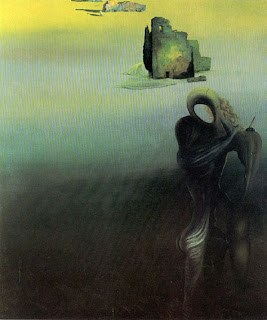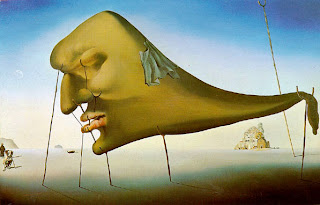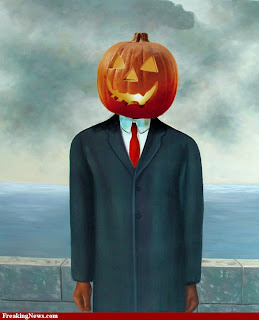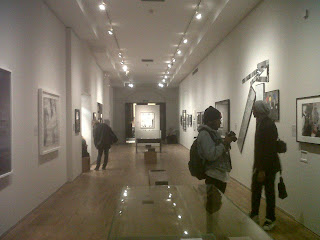I think the left knee is popping up a bit too fast, and there are another couple of areas that need some more attention, but I'm much happier with this one and I'm hopefully gonna start polishing soon!
Monday 29 November 2010
Step-over Playblast
This is a shot that I was stressing out about trying for a while. It took me about three million tries to do the legs, and another four million to do the arms. I just couldn't get them to look right! But the playblast below is the best one I've done:
I think the left knee is popping up a bit too fast, and there are another couple of areas that need some more attention, but I'm much happier with this one and I'm hopefully gonna start polishing soon!
I think the left knee is popping up a bit too fast, and there are another couple of areas that need some more attention, but I'm much happier with this one and I'm hopefully gonna start polishing soon!
Tuesday 23 November 2010
Shot 1
Shot 1: done. It really upsets me that all the effort I put into cushioning the animation and really subtle moving holds don't show up in the youtube clip above. But at least I know they're there and that they will show up in the final render, so I can sleep at night. The next shot I'm going to work on is the step/trip over the rope. Pretty nervous about this one because it's gonna be tricky. Below are a coupe of videos of me attempting to make something to work from, and looking like a complete idiot at the same time. It has been useful, but I think I'm going to need to sketch this out to understand it more.
This first one was a little extreme, and I was going at it too 'straight on' if that makes any sense. Tried to fix these problems in the second one.
No idea why that's playing so fast but this one actually helped me a lot more. But I didn't know what to do with my hands. I was conscious of not knowing what to do with the hands before I made the video, so I think I forced it a bit when I filmed it. But this is something I can work out when I start sketching poses out, and the video helped me out a lot with the legs. It was really helpful to see that the leg rises first in anticipation of the height of the object, and then the toes push the weight over rope.
Goon Walk Cycle Test
This is just a quick test to see how the rig works. Took me about 2/3 hours to get this much done but it's obviously not polished or anything. The walk itself is pretty vague and doesn't really convey a lot of personality, but was only really meant to test out the technical points of the rig. And to get me back on walk cycles, because after producing about 6 or 7 in year one i was happy to leave them for a while, but ended up forgetting about them completely. Took me a bit of stressing out and thorough read of the animators handbook to get my head around them again, but I got there eventually!
Malakai has worked really quickly and has produced not only a story board but an animatic as well, both of which are really good quality! I've got a much better idea of what I'm going to be animating and how the film is going to flow now.
And here's the animatic:
After talking about it for a while we decided that Joe will be doing the animation up to where the Character walks to the painting, and I will be animating from there until he gets sucked into it. There's a fair amount of tricky stuff in there, especially the shots where he steps of the rope barrier and falls which is going to take a fair amount of research to be able to convey the weight well. But the first shot to be done it the close up of the face reacting surprised to the litter on the floor. It's only a second or so long, but there needs to be a lot of polish on the animation so that it doesn't look boring, so I'm starting that straight away.
Aside from that the museum interior has been finished! Dave and Maik have worked really quickly and we're all really happy with the result:
And here is an early lighting test done by James which I think works really nicely to set the atmosphere of the room. It's also got a roof mock up by James which looks really cool as well:
There's also a much higher poly version of the ropes that Dave has done which looks a bit more realistic:
We've also made quite an important change to the character, in making him a security guard instead of a janitor. We thought that it would fit the piece better if he was a security guard on patrol, because not only would we avoid having to have him cleaning or push a mop around, but we liked the idea of a security guard being bored on a night shift so often day dreams to pass the time. As the whole sequence of being sucked inside the painting gets revealed to be an elaborate day dream, we thought it would fit a lot better. Maik and Dave have added some additions to the character and changed some of his colours to make him a much more authentic character, as seen below:
Modelling List
We sat down today and went through a list of what needed to be modelled, which is a lot. We've got plinths, frames, arched doorways, rope barriers, security cameras, edges and covings, frames, more complicated frames, statues, pots, benches, and more. Scary stuff, but Maik and Dave are confident that they can get most of the low poly models done by the end of the week. After that we sat down with Malakai and spoke a lot more in depth about the storyline and how we which shots we would need to use to be able to push the narrative on effectively.
As the environment doesn't react without the character, it is the character that will be driving the entire film, so we spent some time developing the character himself and what attributes would force him to move around within the environment. The most important thing we decided was how the film was going to end. The character would be walking through a corridor, spot a piece of litter between the rope barrier and the painting and make his way into the room. He steps over the barrier (though trips and knocks it over) and regains composure in time to notice the painting rippling very strangely. To investigate, he touches the painting which causes him to get sucked into it. Once in the painting he is obviously fairly alarmed about what has just happened, but lets his inquisitive nature take over and investigates the structure in front of him. Once the character has had change to take in what is around him, the structure then shatters (yes shatters) and he is shown standing blankly in front of the painting as he was before, when another member of staff snaps him out of his day dream and tells him to get back to work.
It's a lot of work in all areas, but all the more reason to get started straight away. While Dave and Maik continue to model, Malakai is going to begin developing a first draft storyboard. Meanwhile myself and Joe are going to begin with some simple tests on the rig we will be using called Goon:
Hardly my finest piece of animation, but it was just a quick test I did to get to grips with the rig. It's honestly one of the easiest free rigs to use that I've come across. It has a lot of similar features to the Animation Mentor rig Bishop, and all of its controls aren't over complicated. I've also been learning from a book by an animator called Eric Luhta called "How to cheat in Maya 2010". It's a really useful book for animating that breaks down a lot of the techniques used in maya for animating, covering everything from setting projects to polishing and lighting/rendering. And all of its examples are executed using the Goon rig too, which is a massive help. I've already learnt how to refine my animation using moving holds and cushioning etc, so I'm really eager to start working straight away. Going to do a walk cycle test next to get used to his full body controls. Then when Malakai has done a few rough shots we can start allocating different sections for myself and Joe to begin animating to. More coming soon!
As the environment doesn't react without the character, it is the character that will be driving the entire film, so we spent some time developing the character himself and what attributes would force him to move around within the environment. The most important thing we decided was how the film was going to end. The character would be walking through a corridor, spot a piece of litter between the rope barrier and the painting and make his way into the room. He steps over the barrier (though trips and knocks it over) and regains composure in time to notice the painting rippling very strangely. To investigate, he touches the painting which causes him to get sucked into it. Once in the painting he is obviously fairly alarmed about what has just happened, but lets his inquisitive nature take over and investigates the structure in front of him. Once the character has had change to take in what is around him, the structure then shatters (yes shatters) and he is shown standing blankly in front of the painting as he was before, when another member of staff snaps him out of his day dream and tells him to get back to work.
It's a lot of work in all areas, but all the more reason to get started straight away. While Dave and Maik continue to model, Malakai is going to begin developing a first draft storyboard. Meanwhile myself and Joe are going to begin with some simple tests on the rig we will be using called Goon:
Hardly my finest piece of animation, but it was just a quick test I did to get to grips with the rig. It's honestly one of the easiest free rigs to use that I've come across. It has a lot of similar features to the Animation Mentor rig Bishop, and all of its controls aren't over complicated. I've also been learning from a book by an animator called Eric Luhta called "How to cheat in Maya 2010". It's a really useful book for animating that breaks down a lot of the techniques used in maya for animating, covering everything from setting projects to polishing and lighting/rendering. And all of its examples are executed using the Goon rig too, which is a massive help. I've already learnt how to refine my animation using moving holds and cushioning etc, so I'm really eager to start working straight away. Going to do a walk cycle test next to get used to his full body controls. Then when Malakai has done a few rough shots we can start allocating different sections for myself and Joe to begin animating to. More coming soon!
Monday 22 November 2010
More Research
I think it's about time we go straight for the strangest of the Surreal painters: Salvador Dali, as there is no one better known for creating stuff that is, in all honesty, proper weird. 10 points to the first person who can tell me exactly what this really is:
I do however really really like his work! I studied him a lot over my two years in A-Level art and influences from him were extremely common in a lot of my projects. As I said with MC Escher, I think it is amazing that he was able to put these impossibly strange structures down on canvas, as most people would have trouble even conjuring up something like this let alone being able to perfectly visualise it.
The complete lack of recognisable structure makes Dalis work perfect for our project. It's got its link back to reality and a dream like state of creation that makes his work the perfect example of Surrealism and a strong contrast to the interior structure of the museum. When I ran this by the group they had also taken a really strong liking to Dalis work, and together we looked throgh a really comprehensive collection of his paintings online called VirtualDali.com and we decided on the painting below:
"Atavistic Vestiges After The Rain". We decided on this because it has the best features of a lot of Dalis paintings in it, and ones that are very appropriate to the project. For starters it is set in a strange, unfamiliar open landscape, with the low horizon complimenting the height of the giant, water-like statue being held up by a stick and a rock. The statue is a really unconventional shape and the whole painting has got a really strong dream-like feel to it, which everyone thought was a really strong feature.
So it's finally decided! Time to finalise the storyboard, get modelling, and get animating!
I do however really really like his work! I studied him a lot over my two years in A-Level art and influences from him were extremely common in a lot of my projects. As I said with MC Escher, I think it is amazing that he was able to put these impossibly strange structures down on canvas, as most people would have trouble even conjuring up something like this let alone being able to perfectly visualise it.
The complete lack of recognisable structure makes Dalis work perfect for our project. It's got its link back to reality and a dream like state of creation that makes his work the perfect example of Surrealism and a strong contrast to the interior structure of the museum. When I ran this by the group they had also taken a really strong liking to Dalis work, and together we looked throgh a really comprehensive collection of his paintings online called VirtualDali.com and we decided on the painting below:
"Atavistic Vestiges After The Rain". We decided on this because it has the best features of a lot of Dalis paintings in it, and ones that are very appropriate to the project. For starters it is set in a strange, unfamiliar open landscape, with the low horizon complimenting the height of the giant, water-like statue being held up by a stick and a rock. The statue is a really unconventional shape and the whole painting has got a really strong dream-like feel to it, which everyone thought was a really strong feature.
So it's finally decided! Time to finalise the storyboard, get modelling, and get animating!
Further Painting Research
Another artist associated with Surrealism is Rene Magritte. His work again plays with the themes of reality, which led him to produce a number of thought provoking images that are designed to make the audience more sensitive to their surroundings.
When Magritte was 13 his mother committed suicide by drowning herself in a nearby lake, this being the third or fourth time she had attempted to take her own life over as many years. Though it has recently been questioned, researchers have said that Magritte was present when his mother was found dead and that her dress was covering her face, which could be a reason that he so often obscures the face in his work, as seen in the paintings below:
Though they are very interesting, these paintings are not why Rene Magritte stood out at me as a strong possibility to work from for the project. He also produced a lot of work around strange impossible environments like the paintings below:
I thought these images were pretty cool and could be a great place to work from and maybe a develop an idea in the style of these pictures. I also thought that the picture below could be really cool to work from also. I know that it is still set in an area based firmly around geometric objects, but I thought that on a very simple level this painting would be an amazing environment to move around in 3D, with all the figures on different levels being completely still in free space:
Despite being quite interested in Magritte's work I still didn't think it would fit the project that well. I'm just not getting that warm fuzzy feeling.
When Magritte was 13 his mother committed suicide by drowning herself in a nearby lake, this being the third or fourth time she had attempted to take her own life over as many years. Though it has recently been questioned, researchers have said that Magritte was present when his mother was found dead and that her dress was covering her face, which could be a reason that he so often obscures the face in his work, as seen in the paintings below:
Though they are very interesting, these paintings are not why Rene Magritte stood out at me as a strong possibility to work from for the project. He also produced a lot of work around strange impossible environments like the paintings below:
I thought these images were pretty cool and could be a great place to work from and maybe a develop an idea in the style of these pictures. I also thought that the picture below could be really cool to work from also. I know that it is still set in an area based firmly around geometric objects, but I thought that on a very simple level this painting would be an amazing environment to move around in 3D, with all the figures on different levels being completely still in free space:
Despite being quite interested in Magritte's work I still didn't think it would fit the project that well. I'm just not getting that warm fuzzy feeling.
Painting Research
There are basically two separate environments in our project: The Gallery Interior and inside the painting. As I mentioned previously, we all thought that a surreal painting environment, and one that almost lacks a physical structure, would be a really nice contrast to the interior of the museum. With that said, I dug out many of my old A-level art folders and began looking for an artist that would match the theme we were going for. During year 13 I had done a lot of work in the style of MC Escher and the strange environments he sketched out in black and white. I really liked the work that he'd done, particularly the work he did based around impossible structures and his experiments with perspective, and his ability to recreate these things straight from his head completely amazes me. However, I felt that while his work was a pretty good fit for the project, it still involves a lot of geometric shapes like buildings and interiors which I wanted to try to move away from.
On searching his name into google a lot of searches came back mentioning the art movement 'Surrealism'. This seemed like a perfect place to start looking for even more artists to work from. After researching the movement further I found that it was entirely dedicated to expressing dream like content that is without conventional structure. Perfect!
One of the first artists I came across was Max Ernst. Ernst was a german painter who never had any professional artistic training, but was studying philosophy at university when he dropped out to pursue his painting further. His interest in philosophy may be what led him to Surrealism as it focuses around themes of reality and reason. His part in the first world war dramatically interrupted his artwork, and he admitted in his autobiography that “Max Ernst died 1st of August, 1914. He was resurrected on the 11th November 1918 as a young man who aspired to find the myths of his time”.
His time spent at war can be seen in quite a lot of his work, particularly this painting “The Elephant Celebes” with the elephant being a huge mechanic sculpture which relates back to his time spent around so many deadly machines when he fought for Germany.
I really like this painting! And I was never really an artistic person, I was more interested in sketching realistic things and trying to be accurate than representing things within fine art paintings. But I think the elephant in this is really cool and the setting for it seems really surreal and very different to that of the museum. However, I think the mechanic nature of the painting means that I'm not going to be carrying it through to the project, and the search will continue! I'm going to continue to look through the Surrealism movement to see if I can find more artists.
Thursday 18 November 2010
National Gallery
Above are a few pictures I took on a trip to the National Gallery, which I found really really useful! It's easy to start saying that we want it to look like this or that based on pictures we found on the internet, but you never really get a sense of the room as a whole until you see it first hand. We pretty much looked in every room to find one that felt like we could take the most amount of inspiration from it, and where we could see our project being set. We passed a room near the entrance which was a lot like how I imagined our project room to be like: longer than it was wide, pretty high ceilings, plinths with statues on by the arched doorway etc, and below is a panoramic view of the room.
There were a lot of things that felt quite nice about the room, and I thought that, with the right lighting and props, this could be a really well fitting room. We talked about it all together we were all pretty much in agreement. Until we went into this room:
Maybe it was the ambient lighting, or maybe the fact that it was even longer and thinner than the last room, but this one was effectively perfect. It was much less cluttered than the previous room, which obviously eases up the modelling workload. But the wood floors and dark walls worked really well to create a nice dim, deserted feel to the room, which was perfect for our project because it was going to be set at night when the gallery is closed.
There were however some things that needed changing. We still wanted to bring over the plinths, and make the benches a little more creative than they were in this room. Sketching begins next and making a list of models for the room. I've done a quick sketch of the room as I now imagine it, including an especially elaborate frame with some source material:
Subscribe to:
Posts (Atom)























































